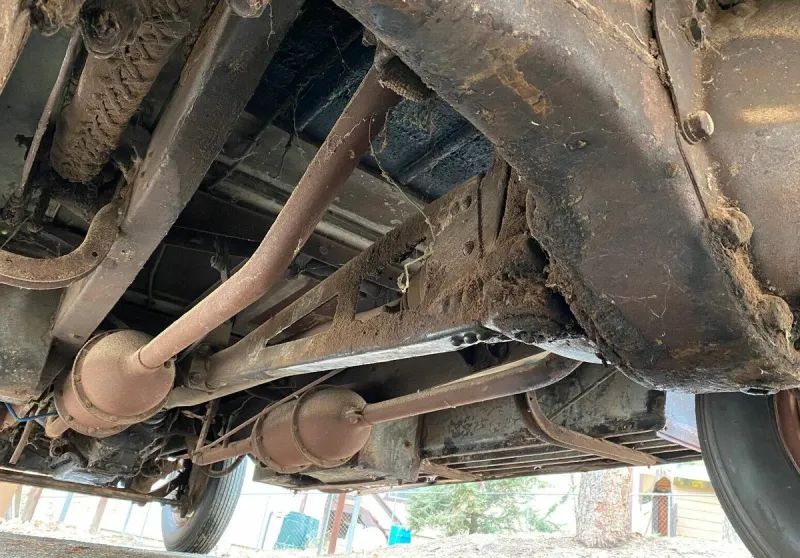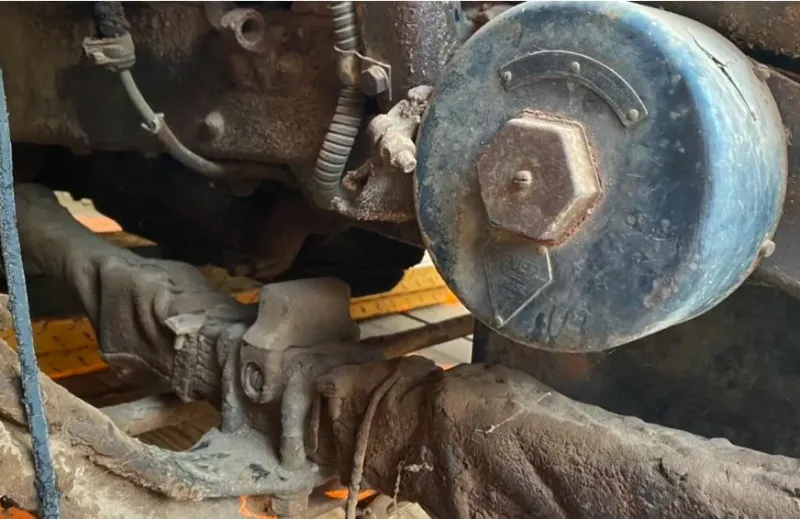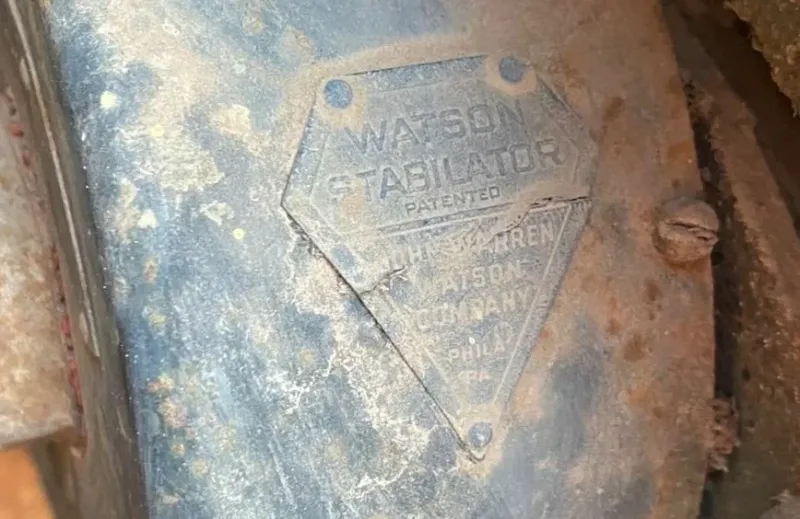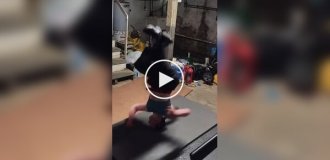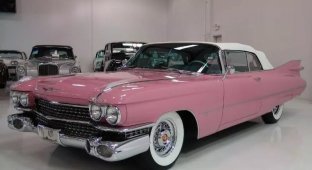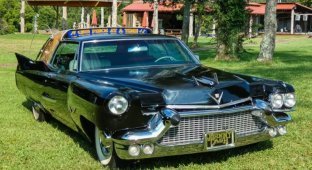Cadillac Series 314 1927 release: the remnants of former luxury (30 photos + 4 videos)
What could be better than finding a car that last saw the road somewhere in the early forties, and since then stood without movement, which preserved all the elements characteristic of that era. 
Even hoses made using the same technology when a tarpaulin impregnated with natural rubber rolled into tubes, even from them something else has survived. Better than this can only be a car with what some super-exclusive technical solution, and it is here. 
Before us is a Cadillac 314, expensive for its time. a luxury car, so to speak, from which we have survived to this day remnants of former luxury. The hot Californian climate saved the salon from mold and final decomposition, as far as I could, but alas, I did not save roof. 
It was blown away back in the early forties, when Cadillac stood on its own very long parking. Of course, they planned to restore the car faster, but as is usually the case, something went wrong. 
Let's look into the interior of this beautiful car, which knew the best time. In addition to the two rows of seats, there are also folding straps, which are even well preserved, obviously, they were little used. Roller blinds, an indispensable attribute of luxury cars in the 1920s and 30s also in their place, flashlights, but the devices are best preserved. 


Take a look at this combination, take it off right now and move it to the museum, under glass, but I think it's too early. They will still serve its intended purpose, and the most interesting device in this car installed separately, to the right of the combination. 
This is a pressure gauge for air pressure in a pneumatic drive system. brakes. Remember the exclusive technical solution that I mentioned at the beginning of the post? This is what it is. 
A hundred years ago in mass cars, even such luxurious Cadillacs and the like were equipped with primitive mechanical brakes. The driver pressed on the pedal, the force from which through the rods or cables were transferred directly to drum or band brake mechanisms. So it was on cars and trucks, the harder it was car, the harder you had to press on the pedal, sometimes literally, two legs at once. 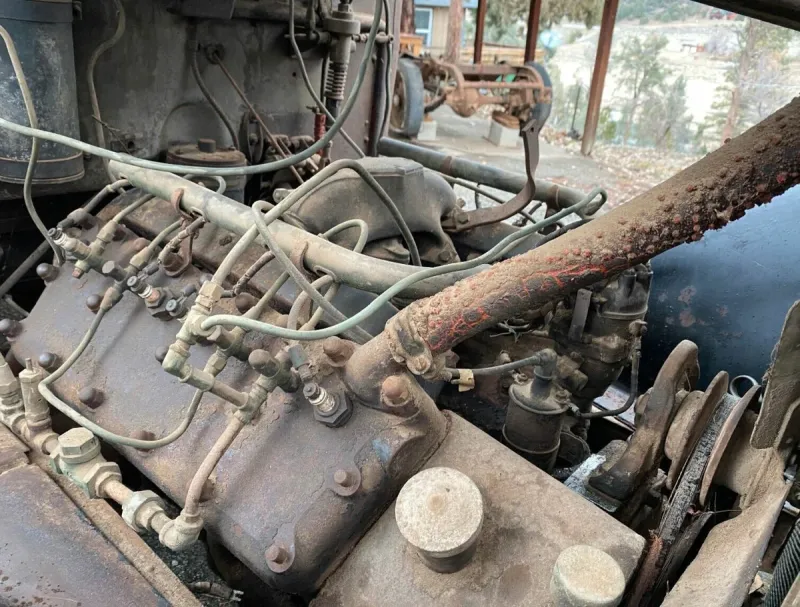
Our garage find for its time was a powerful machine, under the hood there is a V8, so the brake system was required at the same time as much efficiency as possible and as little force as possible, with which the driver had to apply the brakes. After all, status owners sometimes they themselves liked to ride with a breeze at the wheel, and not only watch the driver at work from the back seat. Besides, if move away from this particular car, then Cadillacs were in others bodies, the same coupes that the owners personally drove and wished it do it with maximum comfort. 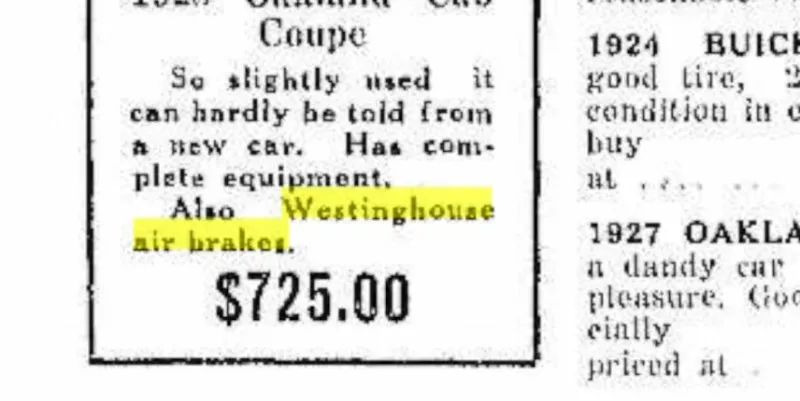
In the late 1920s, Westinghouse created a pneumatic brake system, which as an option could be put on some cars, including Cadillacs. Pneumothorax were very expensive pleasure, as you can see, their installation cost 725 dollars. 
To understand how expensive the option was, the new one is a limousine in 1927 cost $4,125 (about $61,000 today). money). It turns out that the pneumatic brake system added about a fifth of the cost of the entire car. Externally, the machine does not did not differ, but a special plate came with the system, alerting those driving behind that the vehicle was equipped with efficient air brakes, and keep your distance. 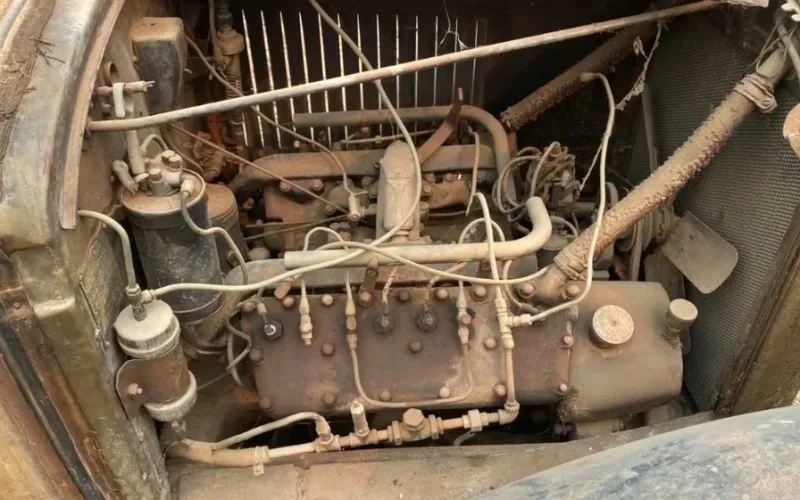
One of the key elements of any automotive pneumatics is a compressor, but it's not here. The compressor is itself engine. See the tubes running in series from each cylinder? It is through them that the selection of compressed air is carried out during the cycle compression, through a special valve. 

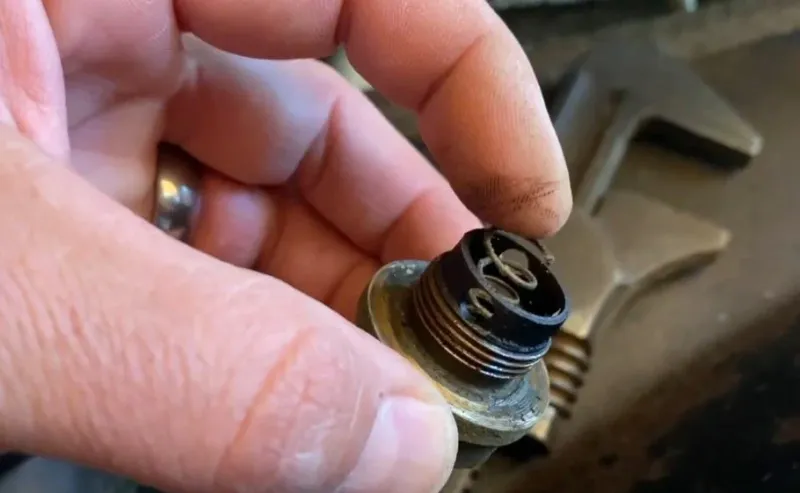
Further along the line there is another, common valve, preventing air from returning back to the cylinders and pressure regulator (soldier), then the highway diverges into two directions - in receiver, which is located under the car, and in this tank, which is under the hood. The one that is smaller and closer to us, the second one behind it - oil filter. 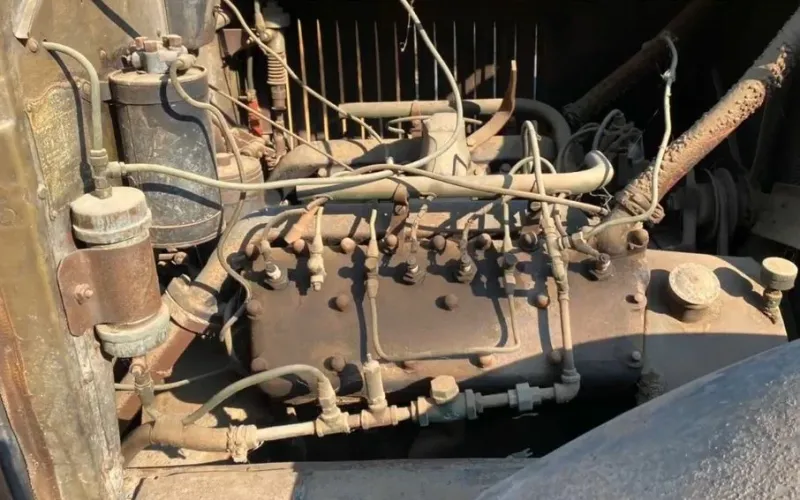
As far as I understand, this is a kind of absorber that collects gasoline vapors, a plug can be seen below, possibly for draining condensate. 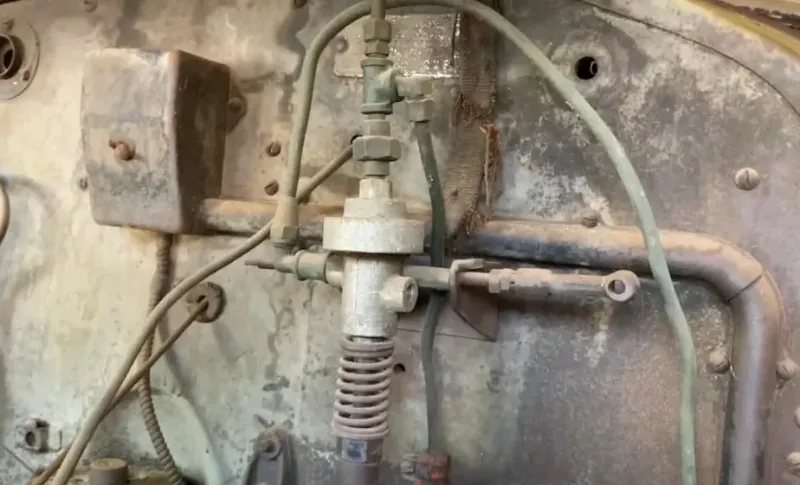

The brake control valve is quite primitive, the system of course, single-circuit, through the tube from the valve, when the pedal is pressed, compressed air went to the actuators. 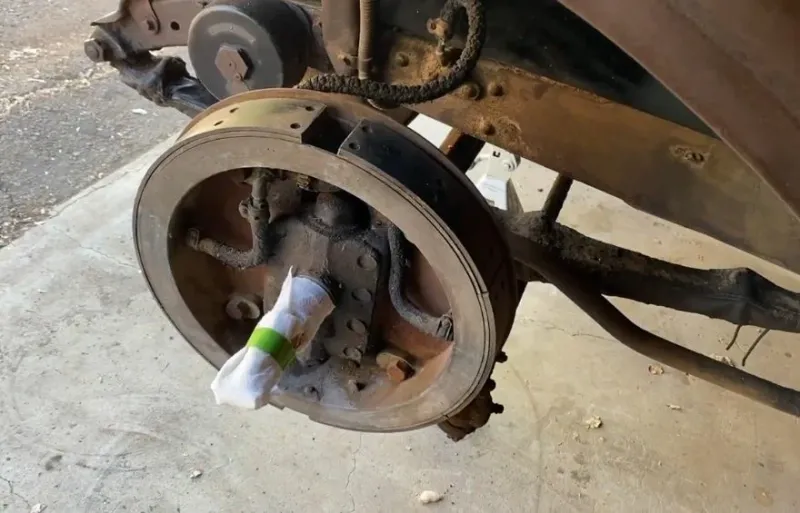
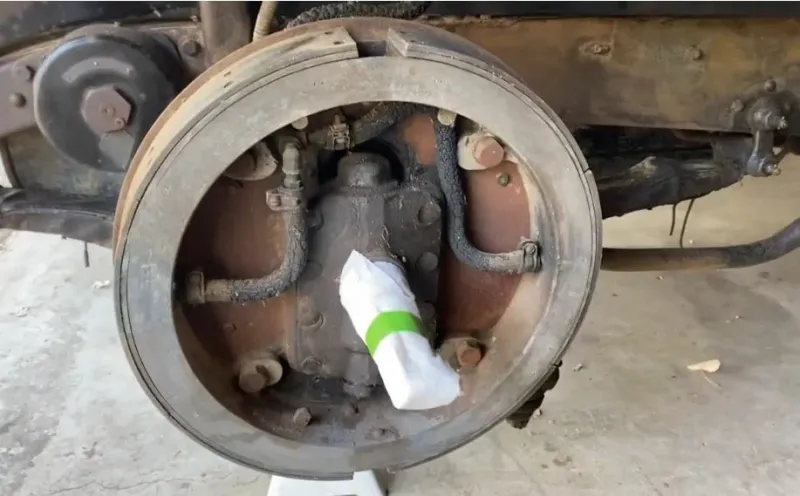

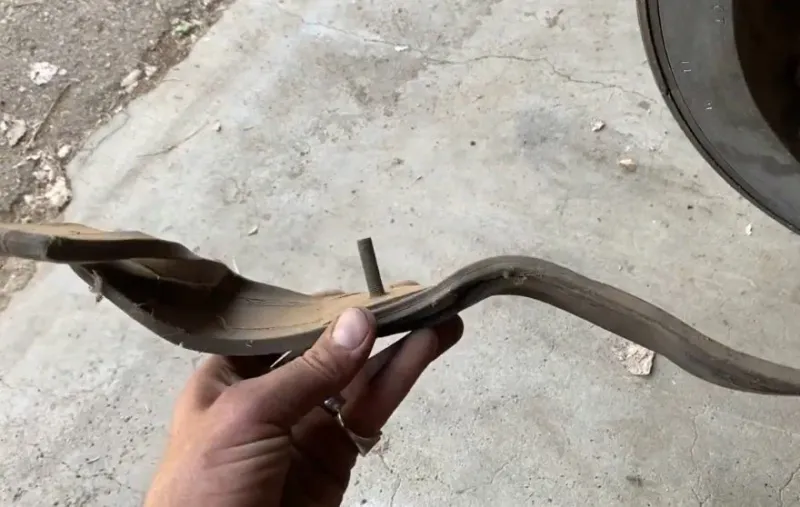
Brake chambers in the form familiar to us (as on modern trucks, for example) did not yet exist, instead of them, between the blocks and mechanism case, two textile-rubber membranes are laid. Exactly they were the actuators, expanding under pressure air, pressed the pads to the drum. As the pads wear between thin steel plates were placed with pads and a membrane. 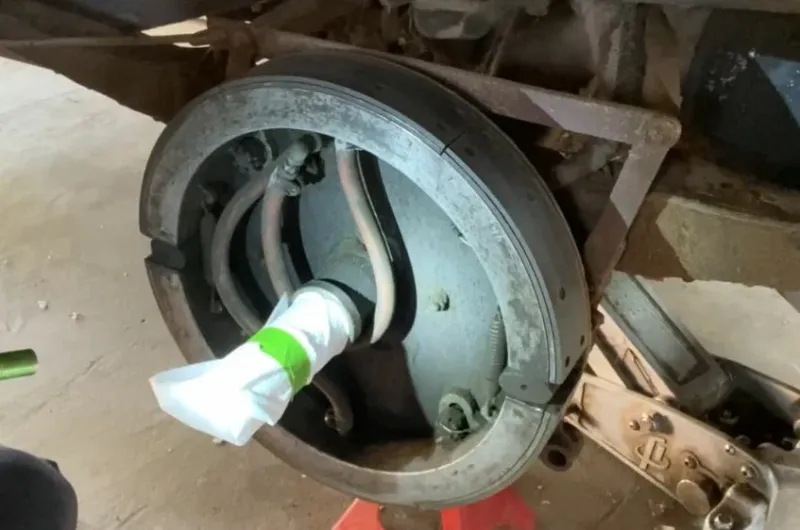
The rear brake is combined, in addition to the pneumatic drive, there is a conventional mechanical handbrake. 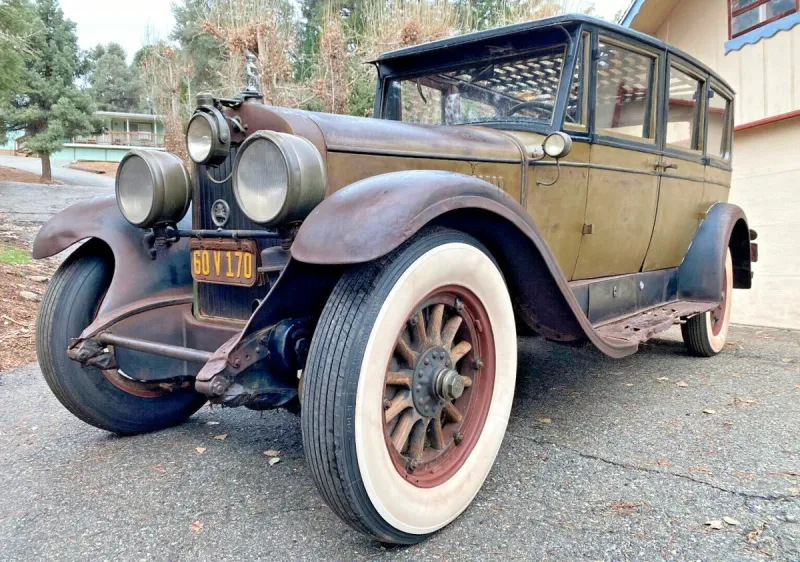
What to say in closing. The system was very expensive and demanding maintenance. Using the engine as compressor reduced its power, but only slightly. imperfection elastic materials of those times required frequent replacement of membranes brake mechanisms. 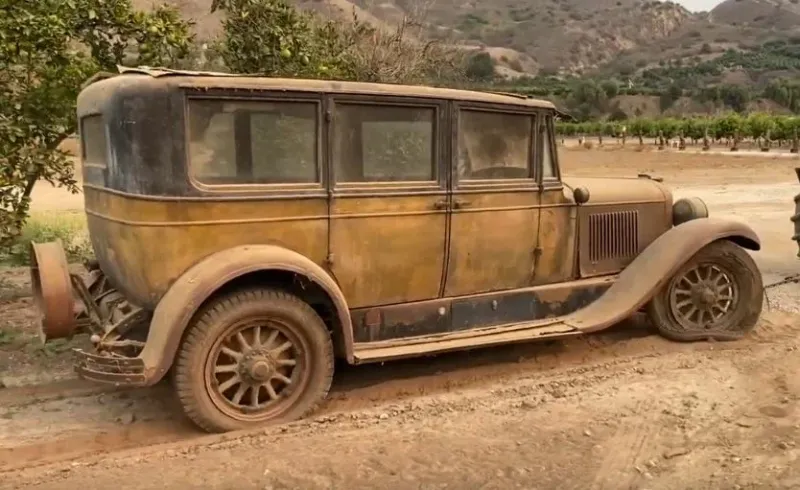
The procedure, although not very complicated (easier than replacing pads on the VAZ classic, for example), but it was required to carry it out regularly, otherwise at one not-so-great moment instead of slowing down the machine could hear a loud zilch. 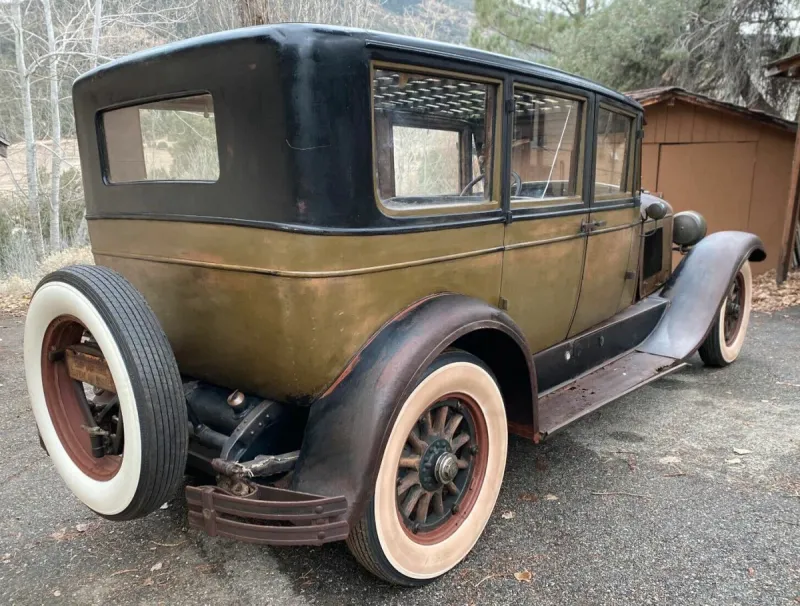
The age of diaphragm air brakes was short-lived, option proved itself not in the best way, but in design bureaus automobile companies were experimenting with hydraulics, which turned out to be simpler, cheaper and much more reliable, successfully surviving to our days in cars and small trucks. 